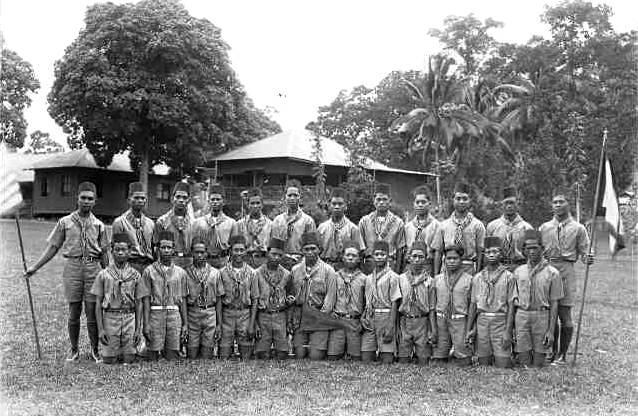
Figure 1.--At this time the only Philipino youth grouo we know of is the Boy Scouts. Here we see a group of Moro Scouts in 1928. |

|
We have little information on Fhilipino youth organizations. We know of no youth groups during the Spanish colonial period. We do have some information on Philippino Boy Scouts. Scouts were organized during the American colonia period. The Scouts are the only youth group we know of the Philippines. Japan occupied the country during World War II (1942-45). The NAZIs promoted Fascist youth groups in many countries they occupied during the War. The Japanese banned Scouting and made some limited effort in the Philippines without a great deal of success. The Filipinos reinstituted Scouting after the liberation (1945). As far as we know, Scouting is currently the only important youth organozation in the Philippines.
We know of no youth groups in the Philippines during the Spanish colonial period. Scouting was organized during the American colonial period. The Scouts are the only youth group of any significance we know of in the Philippines. Japan occupied the country at the onset of the Pacific War (1942-45). The NAZIs promoted Fascist youth groups in many countries they occupied during the War. The Japanese banned Scouting and made some limited effort in the Philippines to organize a pro-Japanese group--the Kalibapi. They met with little success. The Japanese began promoting this youth groups at a fairly late stage of their occupation. The effort appears to have been more of a propganda effort than a determined effort to recruit Filipinos to support the Japanese war effort. Japanese propaganda exagerated the importance of the groups who were primarily organized in the Manila area, the area where Japanese control was strongest. Only a small number of young people were involved. The Kalibapi was a non-political service organized by the Japanese puppet government. They announced plans to establish a youth organization--the Junior Kalibapi (July 1943). It is unclear just why plans were prepared at this time. We suspect the idea was ordered by the Japanese because of the deteriorating military situation in the Pacific. The group would train future leaders of the New Philippines, meaning the Philippines with the Japanese East Asia Co-Properity Zone. The group included youths 9-18 years old. The program would include courses in Japanese language, culture, and "organizing" techniques. The Acting Director-General of the Kalibapi promoted a mass rally of Manila youth to "strengthen the country's will to survive and to attain her rightful destiny as a freedom-loving nation." (March 1944) The Junior Kalibapi failed to attract much interest among Filipinos. The failure caused the Japanese to reorganize the Kalibapi. The new Kalibapi became the single political party permitted in the occupied Philippines. They also abolished the Junior Kalibapi and replaced it with a new organization, the Rlzal Youth. This was to be a mass organization of 4 million Filipino youth 6-21 years of age. The organizers envisioned an extensive movement established at school. School was almost certainly chosen as it provide access to large numbers of children. The organization described "joint action" and "common responsibility" of the school, home, and community. The future citizens of the New Philippines were to develop a "strong national spirit and imbued with the will to produce, the passion to serve, and the sense of mission". There were a few other small, local groups sponsored either by the Japanese or the puppet governent, again mostly in the Manila area. One example was the the Seamen's Institute.
The Seamen's Institute was a vocational school, but with a strong political tinge. The stated purpose was to teach 14-26 year old youths "how to run a ship and how to act like orientas." This reflected the Japanese racial concerns. The Japanese saw the institute as reorienting Filipino youth. The training included a swim in Manila Bay "marked by the recitation of a prayer in the Japanese language while the swimmer is still shoulder deep in the water." The day ended with a ritual in which 300 hoys knelt and repeated after the instructor, "We are a firm link in the Greater East Asia Co-Prosperity Sphere, gigantic structure of everlasting prosperity. .... What do we care for? Building my beloved land. Nothing can stop me from exerting all my efforts for months and years I have been ordained by a divine power to build my country and I will obey that power." [OSS] The brutal character vof the Japanese occupation discouraged most Filipinos fro participating in the Japanese-inspired youth group. The fact that the Japanese begabn the youth programs late in the occupation, meant that they had little time to become established. The American victory in the Battle of the Philippines Sea June 1944) meant that an American invasion was likely an imminent and occurred at Leyte Gulf (October 1944). Thus the efforts to build a pro-Japanese youth group had run out of time before it achieved any success. The Filipinos reinstituted Scouting after the liberation (1945). As far as we know, Scouting is currently the only important youth organozation in the Philippines.
We have little information on Fhilipino youth organizations. We do have some information on Philippino Boy Scouts. The only other groups we know of is the Kalibapi and Rlzal which the Japanese attepted to organize during their occupation of the Philippines.
Office of Strategic Services, Research and Analysis Branch. "Japanese attempts at indoctrimationof youth in occupied areas, " R&A 2982S (March 23, 1945).
Navigate the Historic Boys' Uniform Web Site:
[Return to the Main Oceania country page]
[Activities]
[Biographies]
[Chronologies]
[Countries]
[Essays]
[Garments]
[Organizations]
[Religion]
[Other]
[Introduction]
[Bibliographies]
[Contributions]
[FAQs]
[Questions]
[Unknown images]
[Boys' Uniform Home]
